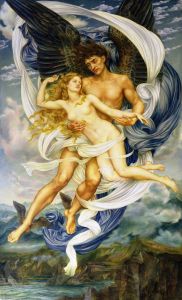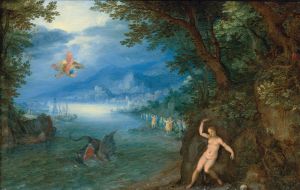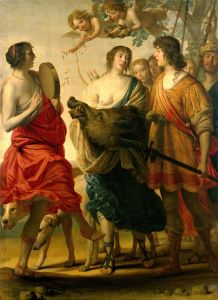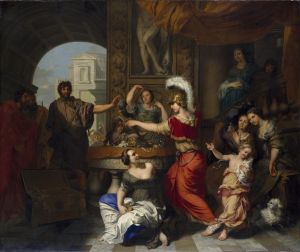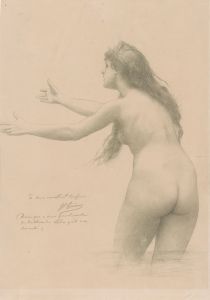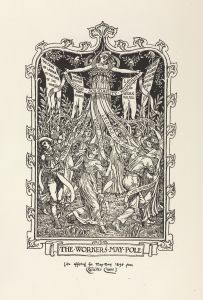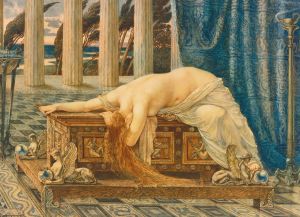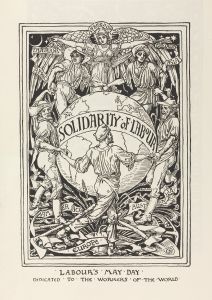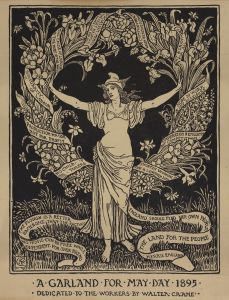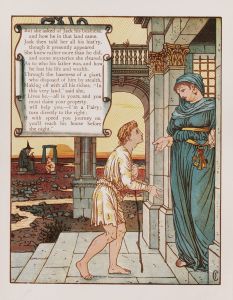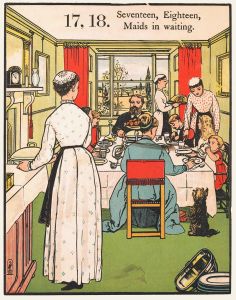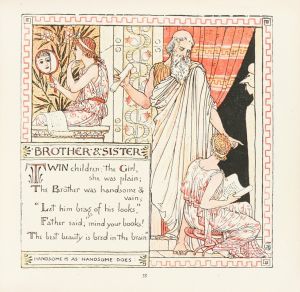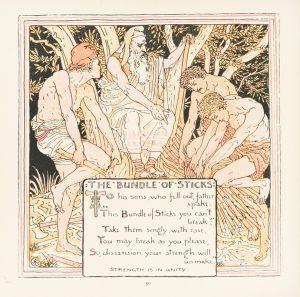
Hercules and the Waggoner
A hand-painted replica of Walter Crane’s masterpiece Hercules and the Waggoner, meticulously crafted by professional artists to capture the true essence of the original. Each piece is created with museum-quality canvas and rare mineral pigments, carefully painted by experienced artists with delicate brushstrokes and rich, layered colors to perfectly recreate the texture of the original artwork. Unlike machine-printed reproductions, this hand-painted version brings the painting to life, infused with the artist’s emotions and skill in every stroke. Whether for personal collection or home decoration, it instantly elevates the artistic atmosphere of any space.
Walter Crane was a prominent English artist and illustrator, known for his contributions to the Arts and Crafts Movement and his work in children's book illustrations. However, there is no widely recognized painting titled "Hercules and the Waggoner" attributed to Walter Crane. It is possible that there might be confusion with another work or a misattribution. Walter Crane did create numerous works inspired by mythology and classical themes, but without specific information or a verifiable source, it is not possible to provide an accurate description or historical context for a painting by this name.
If you are referring to a specific artwork that might be lesser-known or not widely documented, it would be beneficial to consult specialized art history resources or archives that focus on Walter Crane's oeuvre. His body of work is extensive and includes a variety of media, from book illustrations to paintings and decorative arts. Crane was deeply influenced by classical mythology, and he often incorporated mythological themes into his work, which might explain the potential existence of a piece inspired by the fable of Hercules and the Waggoner.
The fable of Hercules and the Waggoner is a classic story attributed to Aesop, which tells of a waggoner whose cart becomes stuck in the mud. The waggoner prays to Hercules for help, but Hercules advises him to put his own shoulder to the wheel, emphasizing the moral that the gods help those who help themselves. This fable has been depicted in various forms of art and literature over the centuries, but without specific evidence of Crane's version, further details cannot be accurately provided.
For those interested in Walter Crane's work, it is recommended to explore his well-documented contributions to children's literature, such as his illustrations for "The Baby's Own Aesop" and "The Baby's Bouquet," where he combined his artistic talents with moral and educational themes. Additionally, Crane's involvement in the Arts and Crafts Movement alongside figures like William Morris highlights his commitment to integrating beauty and craftsmanship in everyday objects, which remains a significant aspect of his legacy.
In conclusion, while Walter Crane's artistic endeavors are well-documented, there is no specific information available on a painting titled "Hercules and the Waggoner" by him. For accurate information, further research into specialized art historical texts or archives would be necessary.





